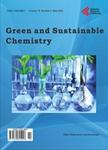Photoelectrocatalytic Oxidation of Ethinylestradiol on a Ti/TiO<sub>2</sub>Electrode: Degradation Efficiency and Search for By-Products
Photoelectrocatalytic Oxidation of Ethinylestradiol on a Ti/TiO<sub>2</sub>Electrode: Degradation Efficiency and Search for By-Products作者机构:Departamento de Ciências Exatas e Aplicadas Universidade Federal de Ouro Preto Loanda Brazil Departamento de Química Universidade Federal de Minas Gerais Belo Horizonte Brazil Instituto de Química Universidade Estadual Paulista Araraquara Brazil
出 版 物:《Green and Sustainable Chemistry》 (绿色与可持续化学(英文))
年 卷 期:2014年第4卷第3期
页 面:151-161页
主 题:Photoelectrocatalytic Oxidation Ethinylestradiol Ti/TiO2 Thin-Film Electrode Degradation Efficiency Search for By-Products
摘 要:The degradation of ethinylestradiol (EE, an orally bio-active estrogen) in an aqueous-methanolic solution using a Ti/TiO2 thin-film electrode and UV radiation (a photoelectrocatalytic system) was evaluated. Hence, HPLC/UV analysis shows that EE (at 0.34 mmol) is totally consumed after 30 minutes of exposure to the photoelectrocatalytic system in the presence of Na2SO4 (0.1 mol·L-1) and with an applied bias potential of +1.0 V versus the Ag/AgCl reference electrode. Moreover, monitoring by direct infusion electrospray ionization mass spectrometry (ESI-MS) and SPME-GC/ MS (solid phase microextraction coupled with gas chromatography-mass spectrometry) reveals that apparently no degradation products are formed under these conditions. Hence, this study demonstrates that the photoelectrocatalytic system can be efficiently used to promote the complete degradation (and likely mineralization) of this hormone under these conditions.



